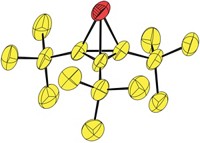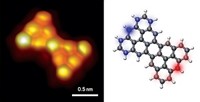Advertisement
Grab your lab coat. Let's get started
Welcome!
Welcome!
Create an account below to get 6 C&EN articles per month, receive newsletters and more - all free.
It seems this is your first time logging in online. Please enter the following information to continue.
As an ACS member you automatically get access to this site. All we need is few more details to create your reading experience.
Not you? Sign in with a different account.
Not you? Sign in with a different account.
ERROR 1
ERROR 1
ERROR 2
ERROR 2
ERROR 2
ERROR 2
ERROR 2
Password and Confirm password must match.
If you have an ACS member number, please enter it here so we can link this account to your membership. (optional)
ERROR 2
ACS values your privacy. By submitting your information, you are gaining access to C&EN and subscribing to our weekly newsletter. We use the information you provide to make your reading experience better, and we will never sell your data to third party members.
Synthesis
A new ‘sulflower’ has bloomed
Persulfurated coronene joins octathio[8]circulene as the second member of a new class of carbon sulfide compounds
by Stephen K. Ritter
February 13, 2017
| A version of this story appeared in
Volume 95, Issue 7
![Structures of persulfurated benzene, octathio[8]circulene, and persulfurated coronene Structures of persulfurated benzene, octathio[8]circulene, and persulfurated coronene](https://s7d1.scene7.com/is/image/CENODS/09507-scicon-sulflower-700?$responsive$&wid=700&qlt=90,0&resMode=sharp2)
It’s a good day for a chemist when you synthesize a new compound, it has a cute structure, and you get to pick a name for it. That was the case for a team of chemists in Russia a decade ago when they synthesized octathio[8]circulene, a new form of carbon sulfide. The researchers called the molecule a “sulflower”—a mash-up of sulfur and flower—for its heterocyclic structure resembling a sunflower blossom. Chemists have been eager to create other members of this class of compounds, including the simplest one, persulfurated benzene. But no one has had the good fortune to do so, until now. A team led by Xinliang Feng of Dresden University of Technology and Klaus Müllen of the Max Planck Institute for Polymer Research has succeeded in preparing what it considers the next generation of sulflower: persulfurated coronene. It’s the first fully sulfur-substituted polycyclic aromatic hydrocarbon (J. Am. Chem. Soc. 2017, DOI: 10.1021/jacs.6b12630). The researchers grew their sulflower in a multistep chlorination/sulfurization process starting with coronene. The sulfur-rich character of the new compound renders it a promising cathode material for lithium-sulfur batteries, the researchers say, and it could pave the way to preparing graphene with persulfurated edges, which would be useful in electronic and superconducting applications.





Join the conversation
Contact the reporter
Submit a Letter to the Editor for publication
Engage with us on Twitter